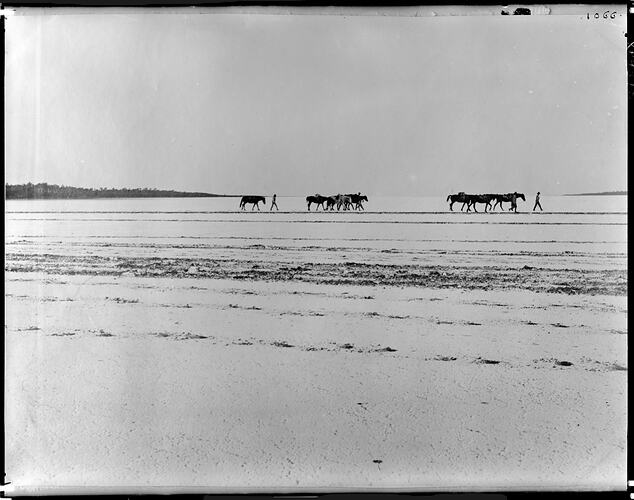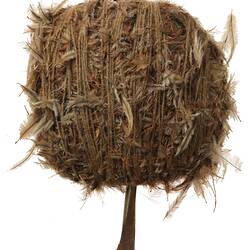Charles Ernest Cowle was born on the 2nd of October 1863 in Launceston, Tasmania. He was educated at the Collegiate School of St. Peter, Adelaide, and after some time in the banking profession travelled north to work on cattle stations. Little is known of his time working on the stations in northern South Australia however in 1886 he was appointed police officer at Heavitree Gap (Alice Springs, Northern Territory).
Cowle then moved to the newly established, remote outpost of Illamurta (recorded by T.G.H. Strehlow as 'Ilamata') - in the southern foothills of the James Range to the West of Alice Springs - in 1893. The Illamurta Police Station functioned for a time as an administrative centre and also as a distribution point for rations to Luritja, Western, Southern and Central Arrernte people. Cowle occupied this post for ten years before retiring due to illness. Cowle undoubtedly possessed a prejudiced attitude towards Aboriginal Australians and routinely used whipping and other forms of violence on Aboriginal prisoners, however he did not condone the murdering ways of his predecessors, such as Constables Wilshire and Wurmbrandt.
Cowle exhibited a genuine interest in Aboriginal cultural life that was exceptional at the time and both his correspondence and the notes transcribed below indicate an intimate relationship with the Aboriginal people of Illamurta. The few photographs of the Illamurta camp, presumably taken by Cowe, show Arrernte and Luritja people's 'wurleys' (shelters) very close to Cowle's own residence. It has also been suggested that Cowle in fact lived with an Arrernte woman known as 'Lady Annalawuljaka' for a number of years. The genealogical records of anthropologist TGH Strehlow noted that 'Lady', also known as the 'Queen of Illamurta', 'first lived with as a young woman with a white police officer Ernest Cowle at Illamurta' and later became the third wife of the well-known Arrernte guide and interpreter Tom Wheeler Tunala.
In 1894 Cowle escorted the Horn Scientific Exploring Expedition, of which Walter Baldwin Spencer was a member, a return journey from Illamurta, across the large expanse of the salt lake Amadeus, to Uluru, and back. Cowle's keen interest in exploration, anthropology, botany, and natural history made him the perfect guide for the scientists. A number of plant and animal species were subsequently named after Cowle by the Horn Expedition members. Cowle is now most well remembered for his friendship and scientific collaboration with Walter Baldwin Spencer and Francis James Gillen. Spencer and Cowle corresponded for between1894 and 1903 and Cowle routinely collected information, objects and specimens of ethnological and natural scientific interest, specifically for the Melbourne Museum. Retiring to Belair (Adelaide) and after a protracted illness (possibly related to syphilis) he died on the 19th of March 1922.
References
Gillen, Francis James, D.J. Mulvaney, Howard Morphy, and Alison Petch. "My Dear Spencer": The Letters of F.J. Gillen to Baldwin Spencer. Hyland House Publishing Pty Limited, 2001.
Mulvaney, John, Alison Petch, and Howard Morphy. From the Frontier: Outback Letters to Baldwin Spencer. Allen & Unwin, 2000.
More Information
-
Keywords
-
Authors
-
Article types

